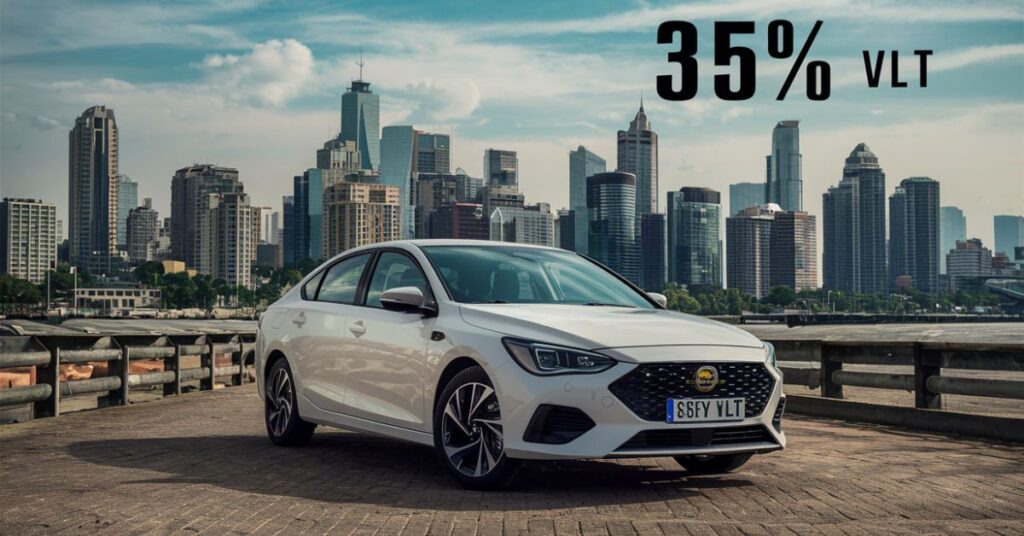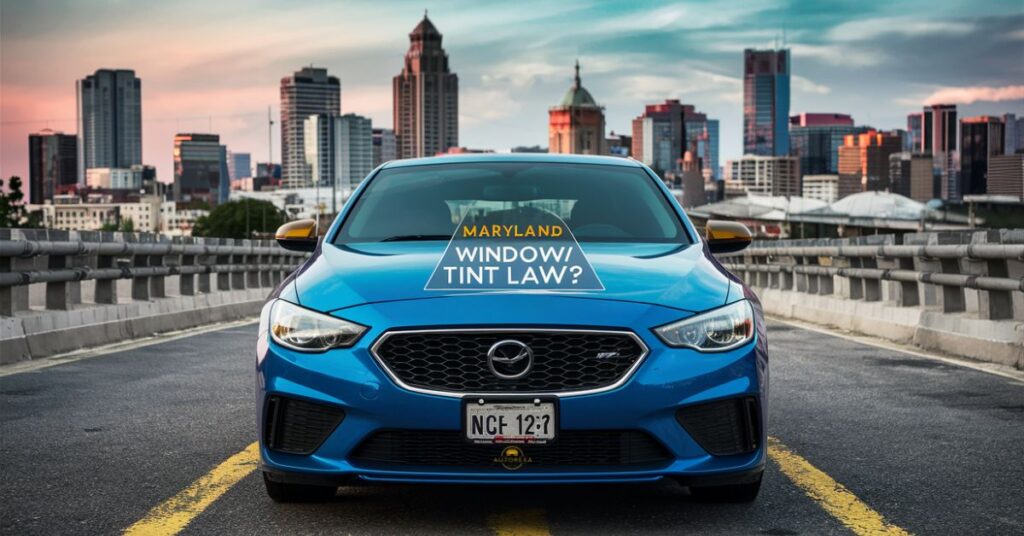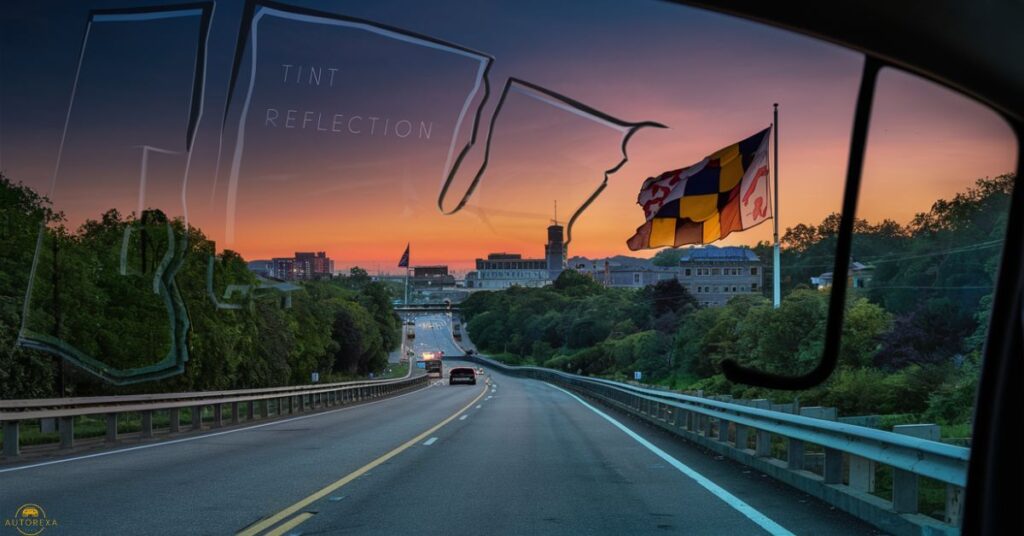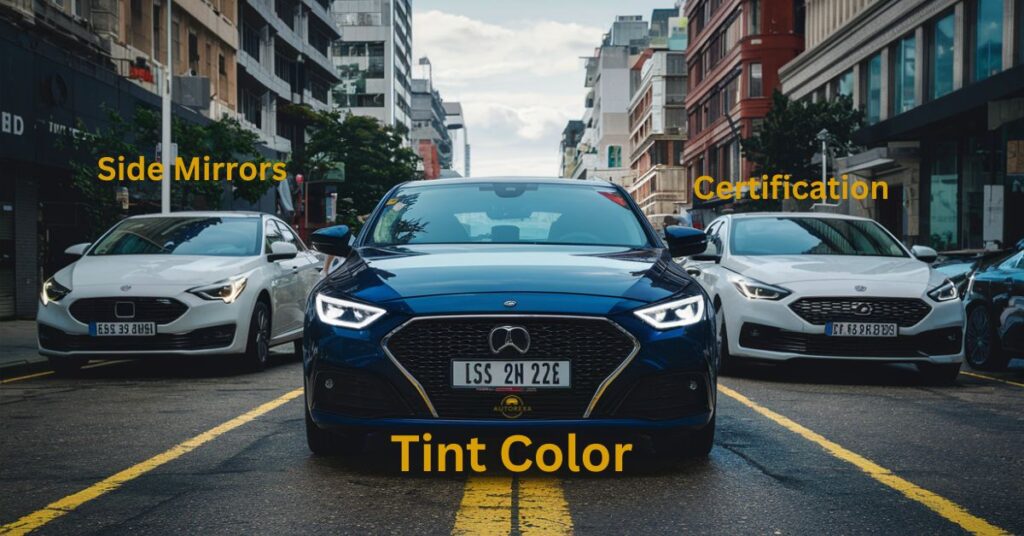Maryland Window Tinting Laws regulate the permissible darkness and reflection levels of tinted windows in vehicles across the state. These laws aim to ensure road safety while providing guidelines for tinting that align with legal standards.
Understanding Maryland Window Tinting Laws is essential for vehicle owners to stay compliant and avoid legal issues. By adhering to these regulations, drivers can enjoy the benefits of window tinting while ensuring road safety.
What is the legal tint in Maryland?

In Maryland, vehicles must follow specific regulations outlined in Maryland window tint laws, dictating acceptable Visible Light Transmission (VLT) percentages. These laws ensure compliance with Maryland car tint guidelines and are enforced by safety inspection stations.
Passenger cars and station wagons typically require 35% VLT on all windows as per Maryland tint regulations. However, multipurpose vehicles like SUVs and vans may have different requirements, emphasizing the need for understanding VLT requirements.
Reflective window film restrictions are crucial in Maryland’s tint regulations, aiming to minimize glare and enhance driver visibility. Adhering to these regulations and avoiding reflective tint contributes to safer driving conditions. Understanding and following Maryland window tint laws is essential for maintaining compliance and ensuring safe tinting practices.
What Are the Maryland Window Tint Laws?

Maryland Window Tint Laws specify the permissible darkness and reflection levels of tinted windows in vehicles across the state. These laws aim to maintain road safety while providing clear guidelines for tinting that align with legal standards. Understanding Maryland Window Tinting Laws guidelines is crucial for vehicle owners to ensure compliance and avoid potential penalties.
The legal tint in Maryland varies depending on the type of vehicle. Passenger cars and station wagons typically require windows to have at least 35% Visible Light Transmission (VLT). However, multipurpose vehicles such as SUVs and vans may have different requirements, offering flexibility to accommodate various vehicle types and needs.
It is essential for vehicle owners to familiarize themselves with the specific VLT requirements applicable to their vehicle type to ensure compliance with Maryland window tint laws. Reflective tint which gives a mirrored appearance is prohibited under Maryland tint regulations.
This restriction is in place to ensure clear visibility for drivers and prevent distractions caused by glare, ultimately enhancing road safety. By adhering to these regulations and avoiding reflective tint, vehicle owners can contribute to safer driving conditions for themselves and other road users.
Read This Blog:Oklahoma Window Tinting Laws – 2023 New Car Tint Laws in Oklahoma
Window tint darkness in Maryland

Window tint darkness in Maryland is governed by specific regulations outlined in Maryland’s tint laws. These laws dictate the percentage of visible light allowed through vehicle windows, ensuring compliance with legal standards.
Understanding these regulations is essential for vehicle owners to avoid potential penalties and ensure their vehicle’s tint darkness meets Maryland’s requirements. The percentage of visible light transmission (VLT) allowed varies depending on the type of vehicle in Maryland. Passenger cars and station wagons typically require windows to have a minimum of 35% VLT.
Conversely, multipurpose vehicles such as SUVs and vans may have different requirements, offering flexibility to accommodate various vehicle types and needs. Vehicle owners should be aware of the specific VLT requirements applicable to their vehicle type to ensure compliance with Maryland window tint laws.
Maryland’s tint regulations also prohibit the use of certain colors and types of window tint darkness. For example, red, yellow, and amber tint colors are not legal under Maryland law. Additionally, reflective window film, which gives a mirrored appearance, is also prohibited.
Following to these regulations and avoiding prohibited tint colors and types, vehicle owners can ensure their vehicle’s tint darkness complies with Maryland’s laws and contributes to safer driving conditions.
Tint darkness for sedans
Tint darkness for sedans in Maryland adheres to specific guidelines outlined in the state’s tint laws. These regulations set the acceptable VLT level for sedan windows confirming legal compliance. Sedan owners need to ensure their windows permit more than 35% light to fulfill with Maryland’s tint darkness limits. This obedience helps avoid penalties and ensures road safety.
Tint darkness for SUV and vans
In Maryland, SUVs and vans must follow tint darkness rules set by state laws. These rules decide how much light can pass through the windows, ensuring they meet legal standards. Owners need to check if their windows match the requirements to avoid penalties.
Also Read This:Ohio Window Tinting Laws – 2023 New Car Tint Laws in Ohio
Window tint reflection in Maryland

Window tint reflection according to Maryland Window Tinting Laws is governed by specific regulations outlined in the state’s tint laws. These laws dictate the acceptable level of reflection permitted on vehicle windows, aiming to minimize glare and enhance driver visibility.
These regulations are crucial for vehicle owners to ensure compliance and avoid potential penalties. Maryland’s tint regulations prohibit the use of metallic or mirrored window tint appearance on both front and back side windows. This restriction is in place to prevent distractions caused by glare and ensure clear visibility for drivers.
Reflective window film restrictions play a significant role in Maryland’s tint regulations, emphasizing the importance of maintaining clear visibility for drivers. By following these regulations and avoiding reflective tint, vehicle owners can help enhance road safety and minimize the risk of accidents caused by impaired visibility.
Tint reflection for sedans
Sedans are a type of passenger car with a closed body structure, typically featuring two rows of seats and a separate trunk space. According to Maryland window tinting laws sedans must follow to regulations barring metallic or mirrored window tint to minimize glare and ensure driver visibility.
- Sedans in Maryland must comply with regulations prohibiting metallic or mirrored window tint to minimize glare.
- These regulations aim to enhance driver visibility and prevent distractions caused by excessive reflection.
- Adherence to tint reflection laws ensures safer driving conditions and reduces the risk of accidents.
- Compliance with these regulations helps maintain clarity in vision, particularly during challenging lighting conditions.
Tint reflection for SUV and vans
SUVs and vans are larger vehicles designed for transporting passengers or cargo, typically characterized by their spacious interior and elevated ride height. Tint reflection for SUVs and vans in Maryland is subject to regulations aimed at reducing glare and maintaining optimal visibility for drivers.
- SUVs and vans in Maryland must adhere to laws prohibiting metallic or mirrored window tint to reduce glare.
- Regulations aim to enhance driver visibility and prevent distractions from excessive reflection.
- Compliance with tint reflection laws fosters safer driving conditions and lowers the risk of accidents.
- Following these regulations helps maintain clear visibility for drivers, especially in challenging lighting conditions.
Other Maryland window tint rules and regulations

Other Maryland window tint rules and regulations encompass various aspects beyond tint darkness and reflection. These guidelines ensure compliance with state laws and promote road safety. Vehicle owners must understand these rules to avoid penalties and maintain legal compliance.
Maryland’s Window Tint Rules
- Extend beyond tint darkness and reflection.
- Ensure compliance with state laws.
- Essential for road safety and legal adherence.
Dual Side Mirrors Requirement
- Crucial when back window is tinted.
- Enhances visibility for drivers.
Prohibited Tint Colors
- Maryland prohibits red and amber tints.
- Maintains clarity and visibility for drivers.
Manufacturer Certification
- Manufacturers must certify tint products.
- Stickers indicating legal tinting are recommended.
Safer Road Environments
- Regulations promote clear visibility.
- Minimize distractions for drivers.
What happens when I violate the Maryland tint law?
When violating Maryland’s tint law, you risk facing penalties and legal consequences. Failure to comply may result in receiving a Safety Equipment Repair Order (SERO) from law enforcement.
This order mandates rectification of tint violations within a specified timeframe, ensuring adherence to state regulations and road safety.
How do I resolve a SERO?
To resolve a SERO issued due to tint violations in Maryland, promptly address the tint issues within the designated timeframe. This involves changing the tint to comply with legal standards and obtaining certification from an authorized inspection station to confirm compliance.
How much is a tint ticket in Maryland?
In Maryland, a tint violation can result in a $50 citation. Failure to rectify the violation within five business days may escalate the fine up to $1,000, emphasizing the importance of timely compliance with tint regulations.
Top 7 Reasons to Tint Your Windows
Window tinting offers numerous benefits, including protection against harmful UV rays, which helps prevent skin damage and interior fading.
| Aspect | Reason |
| UV Protection | Guards against harmful UV rays, promoting skin health and preventing interior damage. |
| Interior Preservation | Protects upholstery and dashboard from fading and cracking caused by sun exposure. |
| Reduced Glare | Minimizes glare from sunlight, enhancing visibility and reducing eye strain for safer driving. |
| Shatter Protection | Holds shattered glass together in case of accidents, reducing the risk of injury from glass shards. |
| Enhanced Privacy | Increases privacy by limiting visibility into the vehicle, safeguarding personal belongings. |
| Increased Comfort | Maintains a cooler interior temperature by blocking heat and UV rays, enhancing comfort. |
| Aesthetic Appeal | Enhances the appearance of vehicles with a sleek, stylish look, adding to their overall appeal. |
State of Maryland Info

Maryland: A Vibrant State on the Mid-Atlantic Coast
Description: Maryland, situated on the Mid-Atlantic coast of the U.S., offers a blend of rich history, bustling cities and scenic landscapes.
Capital: Annapolis;
Leading City: Baltimore, a dynamic urban center known for its historic charm and vibrant cultural scene.
Population: With over 6 million residents, Maryland is a diverse state offering a mix of urban sophistication and rural tranquility.
Area: Spanning approximately 12,407 square miles Maryland boasts stunning natural beauty, from the Chesapeake Bay to the Appalachian Mountains.
Final Thoughts
Maryland window tinting laws are crucial for ensuring road safety and legal compliance among vehicle owners. By regulating tint darkness, reflection, and other aspects, these laws aim to maintain clear visibility and minimize distractions for drivers.
Understanding and adhering to these regulations is essential to avoid penalties and ensure a safer driving environment for everyone on the road. Finally, complying with Maryland’s window tinting laws not only promotes road safety but also contributes to a smoother driving experience for all motorists.
Frequently Asked Questions
What is the legal tint percentage for sedan windows in Maryland?
Sedan windows must allow more than 35% of light in to comply with Maryland’s tint laws.
Are there specific regulations for SUV and van window tinting in Maryland?
Yes, SUV and van windows must meet Maryland’s visible light transmission (VLT) requirements, allowing more than 35% light in.
Can I tint my car windows any color in Maryland?
No, Maryland prohibits tint colors such as red and amber to maintain visibility and safety for drivers.
Do I need dual side mirrors if I tint my back window in Maryland?
Yes, Maryland’s tint laws require dual side mirrors if the back window is tinted to enhance driver visibility.
Are there penalties for violating Maryland’s window tinting laws?
Yes, violating tint regulations may result in citations and fines, along with requirements to rectify the tint level.

![Maryland Window Tinting Laws Everything You Need to Know [2023]](https://autorexa.com/wp-content/uploads/2024/03/Maryland-Window-Tinting-Laws-Everything-You-Need-to-Know-2023-1024x536.jpg)





